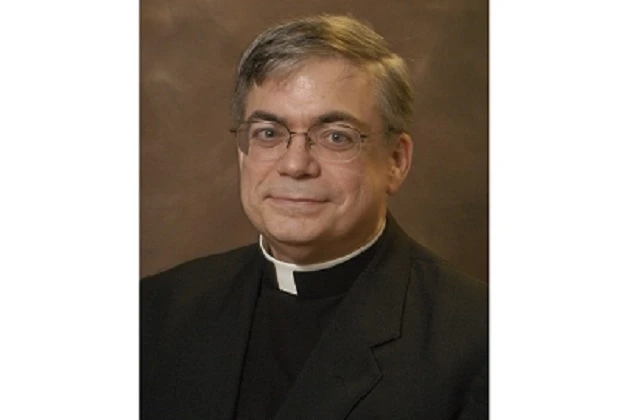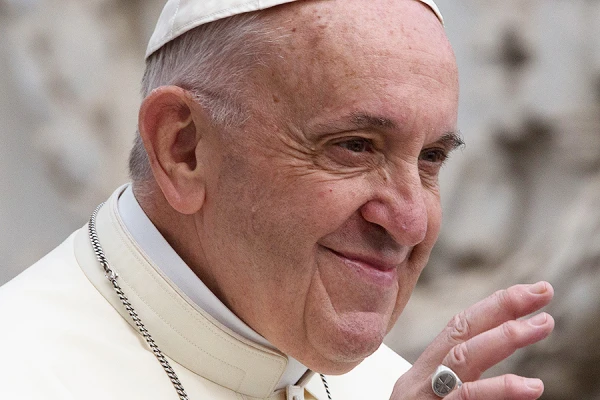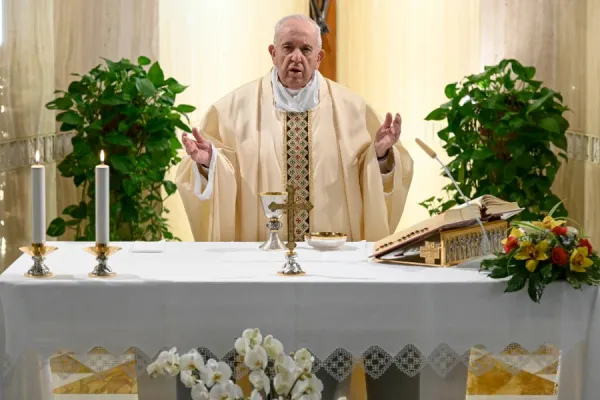
CNA Newsroom, Mar 15, 2025 / 10:15 am (CNA).
The Vatican announced Tuesday that Pope Francis has approved a special Ecclesial Assembly for October 2028 to evaluate how Catholic communities worldwide have implemented the recently concluded Synod on Synodality recommendations.
Cardinal Mario Grech, Secretary General of the Synod, detailed the plans in a letter to bishops worldwide, emphasizing that this gathering will not constitute a new Synod but rather serve as the culmination of a structured three-year implementation process.
“The goal is not to add work upon work but to help Churches walk in a synodal style,” Cardinal Grech wrote.
The cardinal further said that local churches would actively receive and apply the synod’s final document, which Pope Francis directly approved following the conclusion of the Synod in October 2024.
The new implementation timeline begins in May 2025 with the publication of detailed guidelines, followed by a “Jubilee of Synodal Teams” in October.
Throughout 2027, evaluation assemblies will take place at diocesan, national, and international levels, with continental gatherings scheduled for early 2028.
Cardinal Grech highlighted the essential role of local “synodal teams” composed of “priests, deacons, consecrated men and women, and laypeople” working alongside their bishops. These teams, he noted, should be “valued” and, where necessary, “renewed, reactivated, and appropriately integrated.”
“This process does not diminish the role of each Church in receiving and applying the fruits of the synod in its own unique way,” the cardinal wrote. “Rather, it encourages a great co-responsibility that values local Churches while associating the episcopal college with the pope’s ministry.”
Cardinal Grech concluded his letter with an invitation for prayers for Pope Francis, who has been hospitalized at Rome’s Gemelli Clinic since Feb. 14.
If you value the news and views Catholic World Report provides, please consider donating to support our efforts. Your contribution will help us continue to make CWR available to all readers worldwide for free, without a subscription. Thank you for your generosity!
Click here for more information on donating to CWR. Click here to sign up for our newsletter.








What? More?
Too much of an echo chamber for the illuminati? Three comments and a question:
FIRST, the synodal style, by itself, is something for the next conclave to think about, twice. In 2028 Cardinal Grech might even be awarded two minutes to say his piece. One key innovation, here, is “consensus,” and we ask, “consensus about what”? A second devolution is the meaning of the word “alongside.” As successors of the Apostles (apostello: “sent”), the ordained bishops are firstly the guardians of the Deposit of Faith, which is our institutional, charismatic, sacramental, and personal incorporation into the life of Jesus Christ (the Mystical Body of Christ).
SECOND, yes, to some credible process to get the ordained clergy and the laity to support and leaven each other within the “universal call to holiness.” But, what still of Vatican II—which Grech mentions—which retains clarity about the vital “difference in kind as well as degree” (Lumen Gentium). Also a distinction between the realm of Revelation (Dei Verbum) and the realm of the world (Gaudium et Spes).
THIRD, so, in the full text of this initiative (https://www.vaticannews.va/en/vatican-city/news/2025-03/grech-a-new-path-to-help-the-church-walk-in-a-synodal-style.html), why are the terms “Synod” (of Bishops) and “Assembly” used interchangeably? In a deeper way, the presence of the entire Communion of Saints (!) already happens at each celebration of the Mass—as an “extension and continuation” (St. John Paul II, drawing from St. John Chrysostom) of the one event of Calvary. The center of universal human history; not simply an episode within one narrative among many.
So, yes, to reinvigorating a religious and therefore fully human alternative to a post-World War II, post-modern, and flat-earth world moving backward into global spheres of influence. But, alone, the synodal “style” does not replace content. This by procedurally substituting (?) the vertical altar with horizontal roundtables of various sizes.
QUESTION: What does the synodal “style” have to offer to what is, in fact, a new Apostolic Age?
By then we will have a different Pope and this “Synodality” nonsense would have been tossed into the trash can of history and forgotten, where it belongs.
Put not your trust in princes, in a son of man, in whom there is no help. When his breath departs he returns to his earth; on that very day his plans perish.
If not before. Most sons of men have their plans perish long before they die. If the plans happen to persist after the death of the planner, it is only because someone else made it his plan. (John Kennedy had less to do with the moon landing than he is usually credited.)
The question, then, is whether the new pope will take up Francis’s plans. That, of course, is completely unknowable. Many people point to the number of cardinals Francis has appointed, but ALL of the cardinals who elected Francis had been appointed either by Benedict XVI or by John Paul II. As we see, this did not guarantee the election of a like-minded pope. Even so, it is by no means certain that the next pope will change even the most obviously disastrous aspects of Francis’s papacy.
Team Francis, Cdls Grech, Hollerich, Cupich, Farrell, Roche, Tobin, how can we neglect McElroy are pressing forward despite hopeful expectations of the more traditional Catholic. 2028. The Synodal Church sails on regardless of passenger recalcitrance, disenchantment and turmoil.
Where does she sail? Paradise Island. A dreamy place where the brutality of rigorist legalism doesn’t exist. Where good is evil and evil is good. Didn’t Zoroaster foretell the day? A truly happy place in the minds of the enlightened progressives freed from tradition. That insufferable past.
Perchance Leviathan [wasn’t the bronze serpent an effigy?] himself will providentially wreck her, the survivors a new beginning.
“The brutality of legalism doesn’t exist …” except if we need it to enforce the synodal dance. After all, as Cardinal Grech reminded us, this is an expression of “the ordinary Magisterium.” And if a cleric said it, it must be true. Expect this process to be somewhat like the Vatican’s survey last summer: we want to “hear” you until what you start to say is not what we want to hear.
So when are we supposed to stop Synodaling and share the Word of God with someone else?
“Putting away falsehood, let every one speak the truth with his neighbor, for we are members one of another.”
(Ephesians 4:25)
Idiots.
O Lord, when will this affliction of walking talking and ending up actually doing and producing NOTHING will end!!!!!!
The church is being manipulated from the top.
I’m hoping that by 2028 the Synod on Synodality will be a vague memory that only about two or three Catholics will remember with embarrassment, if he or she is unfortunate to remember it at all.
Malice in Wonderland
Hilarious!!!
And perfect..,
How best to manage the worldwide Church? Circular roundtables of layered synodality (local, national, continental)?
Two comments and a question:
FIRST, a thought experiment…what if in 2025 we are tutored by the inner circle that the Council of Nicaea (1700th anniversary) was really in management of inclusion, rather than a recalling of what was/is believed from the beginning and, therefore, a rejection (non-inclusion!) of Arianism (read Pachamama, Fiducia Supplicans, etc.)? AND, then in 2026 or so, we read that the protocol for electing a subsequent pope is modernized to involve, in some way, the advice or even consent of the 2028 Assembly.
SECOND, about management of such a community-based (or Lutheran) remodel of the ecclesial Catholic Church of the Apostolic Succession (with a validly ordained priesthood and stuff like that), clearly rooted in Matthew (28:19) and in Pentecost (Acts 2:1-31)—“listening” to Benedict XVI we hear that the message is not to “turn back”, but rather “to return to the authentic texts of the original Vatican II” (The Ratzinger Report, 1985):
“But the Church of Christ is not a party, not an association, not a club. Not setting the clock back, but setting in right. Her deep and permanent structure is not democratic but sacramental, consequently hierarchical” (49). “Real reform is to strive to let what is ours disappear as much as possible so what belongs to Christ may become more visible…what the Church needs in order to respond to the needs of man in every age is holiness, not management” (53).
QUESTION: Does the replacement of Synods of Bishops with mongrel-democratic Synodality teach/imply/ signal and morph that the process of management IS holiness?
What, exactly, about the post-synodal Study Group #9 possibly anguishing over how to elevate today’s theologians and maybe an Assembly above the Church’s magisterium(?)—that is, assigned to develop “Theological criteria [?] and synodal methodologies [?] for shared discernment of controversial doctrinal [?], pastoral [?], and ethical [?] issues.”
My walk toward Christ is full of failures. My desire has been to follow him, but I fall short of that on a daily basis. I take the responsibility of sharing the message of the Good News with my neighbors seriously. I firmly believe that the role of the Church is to be the bridge between Good and all of humanity. The Church is supposed to serve as community to unite believers as one body in Christ. She is the beacon that clearly, without hesitation and full of clarity, announces the teachings of Christ to the world.
Anything, any movement, any teaching that attempts to move the Church from her purpose is heretical and must be cast out. In my weakness, I strive to walk in truth. I am not in a position, and I am unworthy to condemn another, but I know Jesus Christ and choose to walk with him. I ignore everything else.
Amen brother! You’re for sure on the right road.
YADA YADA YADA!!
BLAH BLAH BLAH!!
FURTHERMORE – asxovvnddiuertn434&&9999v330fgjv..!!
AND THIS TIME – I MEAN IT!!!
LOL, I can’t help but agree
Sounds like you’re all ready for the Jubilee of Synodal Teams!
The Synod was a “meeting about meeting” we were told. I guess the post-Synodal Synod will be a meeting about meeting about meeting. Just think of it this way: it’s the Vatican’s version of Festivus.
Serious question. Has a single parish made a single change because of the Synod?
Ours has not, not that I can tell
“The goal is not to add work upon work but to help Churches walk in the Synodal style” according to Cardinal Grech.
Help Churches walk in the synodal style. Hmm… that sounds eerily like “I’m from the Federal Government and I’m here to help.” More to the point, the 2028 Synod will be where the teeth come out to “help Churches walk in the Synodal style.” Well, that could prove problematic for Churches faithful to Tradition that exhibit bureaucratic resistance to walking in the Synodal style.
It is my prayer that Mssrs. Johann du Toit and Ken T are correct in their prediction that post-Francis, synodalism will be discarded. I am not so optimistic. I fear that 2028 will be the beginning of the final crackdown. The Church of Accompaniment directing us to accompany together into the cattle car taking us to banquet of rotten fruit compliments of the Synodal Way.